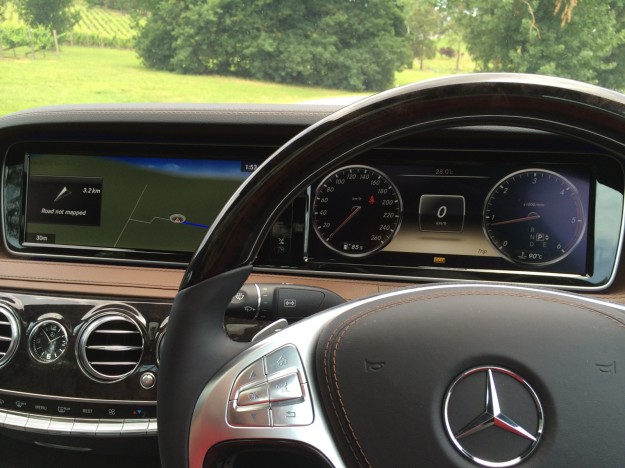
The launch of a new-generation Mercedes-Benz S-Class has always been regarded as an insight into the future of the automotive world – and a sneak peek into what will eventually become standard equipment on everyday cars of nearly all manufacturers.
Times have changed, though. Mercedes-Benz recently used the E-Class to unveil plenty of its new technology and is expected to bring even more to the new C-Class mid next year, but there’s still something special about the launch of an S-Class, a car filled with so much technology it can be overwhelming.
Think of a vehicle technology and there’s a good chance it debuted in the S-Class: fuel injection, crumple zones, disc brakes, automatic transmissions, anti-lock brakes, cruise control, integrated bumpers, airbags, skid control, double-glazed windows, electronic stability control and more.
With the launch of the new Mercedes-Benz S-Class, codenamed MR222, it’s worth looking at what the German auto giant has dished up this time as it’s likely to preview the features you’ll find in your car in the coming decade.
Most notable of the new generation’s technology features is its magic body control system. Mercedes has employed stereo multifunctional cameras to scan the road surface ahead and detect imperfect surfaces, allowing the S-Class to anticipate the jolts expected in the suspension and prepare itself for them, unlike the reactionary systems employed by every other car on the road today.
Apart from seeing what’s ahead and helping prevent a collision by automatically applying brakes or turning the steering wheel, in the event of an accident the pre-safe plus system (also on E-Class) actively pulls the front passengers back into their seats (using the seatbelt) and utilises a precise system of releasing the seatbelt tension for maximum airbag effectiveness.
There are airbags in the rear seatbelts, and the rear seatbelt buckles themselves come out of their position for easier buckling, then pull themselves back into the seat for extra space. In the event of an accident, the buckles come to their highest position for easier access.
The seat coolers now employ fans that suck air into the seats to help cool down the surface prior to blowing cold air out when the temperature is right. If it’s a cold day, the seat heaters can give you the automotive equivalent of a hot-rock massage while you drive.
There’s cross wind assist, which can detect wind speed on an open road and adjust the car’s computers to better compensate.
There’s even a system that uses two solar panels at the front and rear of the S-Class, plus the car’s GPS system that detects the position of the sun to adjust the air conditioning to create an even cabin temperature. There is a four-zone climate control system, and the front seat passengers can adjust their fan speed separately.
Like the Ford Kuga, simply wave your foot under the rear bumper and the boot opens (as long as the key is in your pocket).
It’s when you sit inside and see the two 12.3-inch high-resolution LCD screens (831,600 pixels each) that it all starts to hit home.
Mercedes-Benz’s NTG5 COMAND operating system comes with Google Earth and Street View, an internet browser, wifi hotspot, weather… the list goes on. You can set the ambient lighting from a selection of seven colours for each individual lighting section, so you can have no light behind the infotainment screen while having bright lighting for the rear passengers.
Connect your iPhone and you can share its internet to any passenger in the car. This allows for internet tethering only in the car and a layer of protection between your phone and its users. It also counts the amount of data used so you can monitor passenger usage.
With 250Gb of storage, WLAN, DTV, an SD card reader, two USB ports and the latest Bluetooth technology, NTG5 is relatively future-proof, though the hard disk is not a solid state drive.
There are 30 million lines of code for the NTG5’s software, much more than Windows 8 or Mac OSX. It uses 150Mbit/s fibre optic connections (12 times faster than ADSL2) to transfer data and comes with 10 flex ray and 73 CAN control units plus 61 local networks.
In total, there are 734 harnesses in the car, 2400 wires (which is roughly 5km of wiring), and to save weight, Mercedes has ditched copper wires and gone for aluminium instead.





